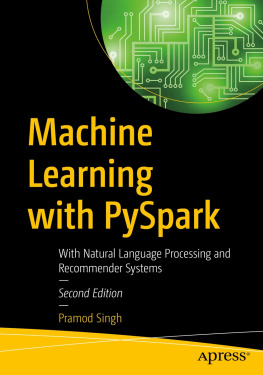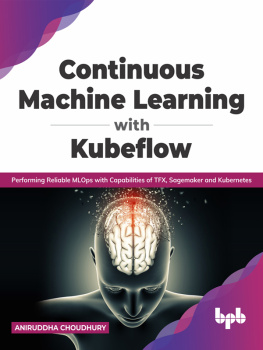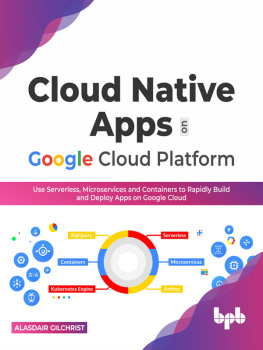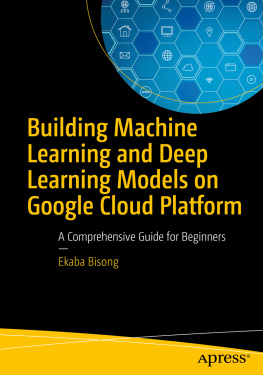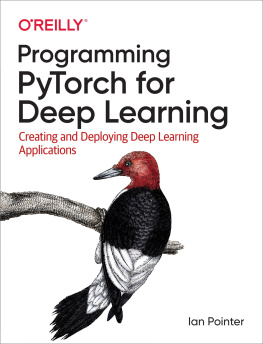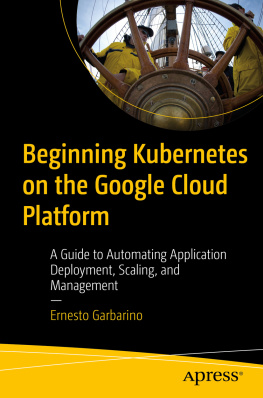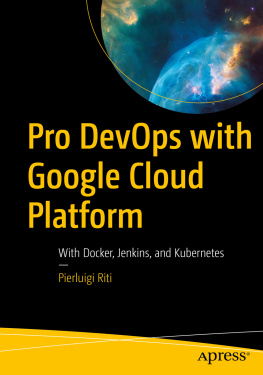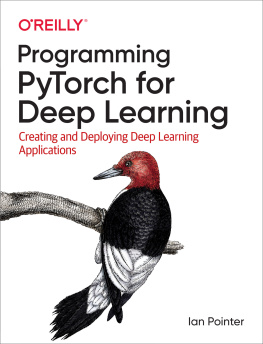Pramod Singh - Deploy Machine Learning Models to Production: With Flask, Streamlit, Docker, and Kubernetes on Google Cloud Platform
Here you can read online Pramod Singh - Deploy Machine Learning Models to Production: With Flask, Streamlit, Docker, and Kubernetes on Google Cloud Platform full text of the book (entire story) in english for free. Download pdf and epub, get meaning, cover and reviews about this ebook. publisher: Apress, genre: Children. Description of the work, (preface) as well as reviews are available. Best literature library LitArk.com created for fans of good reading and offers a wide selection of genres:
Romance novel
Science fiction
Adventure
Detective
Science
History
Home and family
Prose
Art
Politics
Computer
Non-fiction
Religion
Business
Children
Humor
Choose a favorite category and find really read worthwhile books. Enjoy immersion in the world of imagination, feel the emotions of the characters or learn something new for yourself, make an fascinating discovery.
- Book:Deploy Machine Learning Models to Production: With Flask, Streamlit, Docker, and Kubernetes on Google Cloud Platform
- Author:
- Publisher:Apress
- Genre:
- Rating:4 / 5
- Favourites:Add to favourites
- Your mark:
- 80
- 1
- 2
- 3
- 4
- 5
Deploy Machine Learning Models to Production: With Flask, Streamlit, Docker, and Kubernetes on Google Cloud Platform: summary, description and annotation
We offer to read an annotation, description, summary or preface (depends on what the author of the book "Deploy Machine Learning Models to Production: With Flask, Streamlit, Docker, and Kubernetes on Google Cloud Platform" wrote himself). If you haven't found the necessary information about the book — write in the comments, we will try to find it.
Pramod Singh: author's other books
Who wrote Deploy Machine Learning Models to Production: With Flask, Streamlit, Docker, and Kubernetes on Google Cloud Platform? Find out the surname, the name of the author of the book and a list of all author's works by series.
Deploy Machine Learning Models to Production: With Flask, Streamlit, Docker, and Kubernetes on Google Cloud Platform — read online for free the complete book (whole text) full work
Below is the text of the book, divided by pages. System saving the place of the last page read, allows you to conveniently read the book "Deploy Machine Learning Models to Production: With Flask, Streamlit, Docker, and Kubernetes on Google Cloud Platform" online for free, without having to search again every time where you left off. Put a bookmark, and you can go to the page where you finished reading at any time.
Font size:
Interval:
Bookmark:
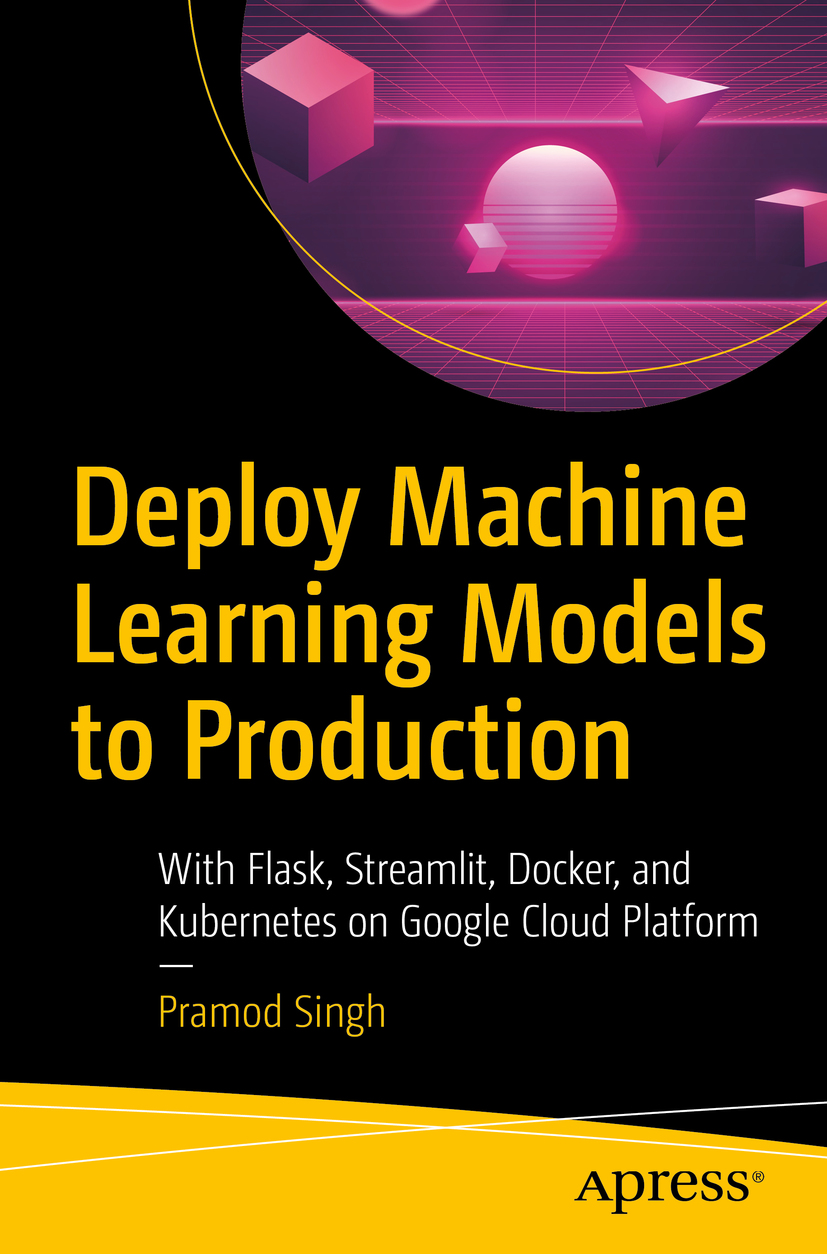

Any source code or other supplementary material referenced by the author in this book is available to readers on GitHub via the books product page, located at www.apress.com/978-1-4842-6545-1 . For more detailed information, please visit www.apress.com/source-code .
This book helps upcoming data scientists who have never deployed any machine learning model. Most data scientists spend a lot of time analyzing data and building models in Jupyter Notebooks but have never gotten an opportunity to take them to the next level where those ML models are exposed as APIs. This book helps those people in particular who want to deploy these ML models in production and use the power of these models in the background of a running application.
The term ML productionization covers lots of components and platforms. The core idea of this book is not to look at each of the options available but rather provide a holistic view on the frameworks for productionizing models, from basic ML-based apps to complex ones. Once you know how to take an ML model and put it in production, you will become more confident to work on complicated applications and big deployments. This book covers different options to expose the ML model as a web service using frameworks such as Flask and Streamlit. It also helps readers to understand the usage of Docker in machine learning apps and the end-to-end process of deployment on Google Cloud Platform using Kubernetes.
I hope there is some useful information for every reader, and potentially they can apply it in their workstreams to go beyond Jupyter Notebooks and productionalize some of their ML models.
I want to take a moment to thank the most important person in my life: my wife, Neha. Without her support, this book wouldnt have seen the light of day. She is the source of my energy, motivation, and happiness and keeps me going despite challenges and hardships. I dedicate this book to her.
I also want to thank a few other people who helped a great deal during these months and provided a lot of support. Let me start with Aditee, who was very patient and kind to understand the situation and help to reorganize the schedule. Thanks to Celestian John as well to offer me another opportunity to write for Apress. Last but not the least, my mentors: Barron Beranjan, Janani Sriram, Sebastian Keupers, Sreenivas Venkatraman, Dr. Vijay Agneeswaran, Shoaib Ahmed, and Abhishek Kumar. Thank you for your continuous guidance and support.

is a manager of data science at Bain & Company. He has more than 11 years of rich experience in the data science field working with multiple product- and service-based organizations. He has been part of numerous large-scale ML and AI projects. He has published three books on large-scale data processing and machine learning. He is also a regular speaker at major AI conferences such as OReilly AI and Strata.

He has also been the technical reviewer of books such as Data Science Using Python and R.
In this first chapter, we are going to discuss some of the fundamentals of machine learning and deep learning. We are also going to look at different business verticals that are being transformed by using machine learning. Finally, we are going to go over the traditional steps of training and building a rather simple machine learning model and deep learning model on a cloud platform (Databricks) before moving on to the next set of chapters on productionization. If you are aware of these concepts and feel comfortable with your level of expertise on machine learning already, I encourage you to skip the next two sections and move on to the last section, where I mention the development environment and give pointers to the books accompanying codebase and data download information so that you are able to set up the environment appropriately. This chapter is divided into three sections. The first section covers the introduction to the fundamentals of machine learning. The second section dives into the basics of deep learning and the details of widely used deep neural networks. Each of the previous sections is followed up by the code to build a model on the cloud platform. The final section is about the requirements and environment setup for the remainder of the chapters in the book.
Font size:
Interval:
Bookmark:
Similar books «Deploy Machine Learning Models to Production: With Flask, Streamlit, Docker, and Kubernetes on Google Cloud Platform»
Look at similar books to Deploy Machine Learning Models to Production: With Flask, Streamlit, Docker, and Kubernetes on Google Cloud Platform. We have selected literature similar in name and meaning in the hope of providing readers with more options to find new, interesting, not yet read works.
Discussion, reviews of the book Deploy Machine Learning Models to Production: With Flask, Streamlit, Docker, and Kubernetes on Google Cloud Platform and just readers' own opinions. Leave your comments, write what you think about the work, its meaning or the main characters. Specify what exactly you liked and what you didn't like, and why you think so.


